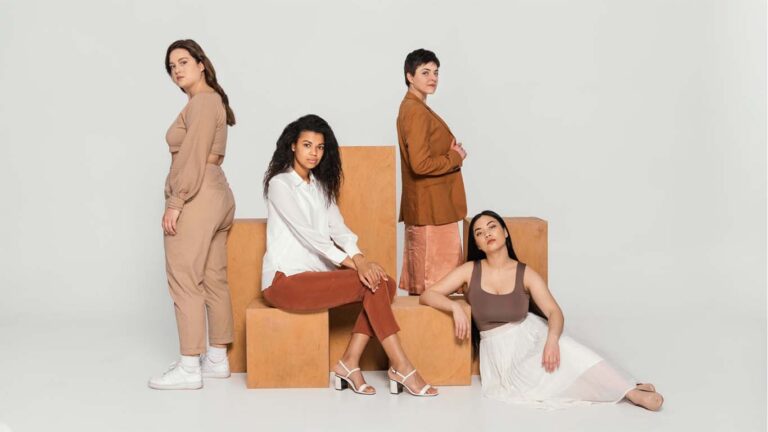
Fashion and Lifestyle
In today’s fast-paced world, fashion and lifestyle are more than just aesthetic choices—they are powerful expressions of identity, values, and cultural shifts. From streetwear to sustainable living, the way we dress and live reflects who we are, what we believe in, and how we connect with the world around us. As trends evolve rapidly, they not only influence our wardrobes but also shape our social behaviors, self-perception, and even political views.
1. The Power of Fashion as a Statement
Fashion has always been a form of self-expression, but in the digital age, its influence has grown exponentially. Social media platforms like Instagram, TikTok, and Pinterest have turned fashion into a global conversation, where trends emerge, spread, and fade at lightning speed.
Today, fashion isn’t just about following the latest styles—it’s about creating an identity. Whether it’s the minimalist aesthetic of Scandinavian design, the bold vibrancy of streetwear, or the nostalgia of Y2K fashion, what we wear tells a story about who we are and what we stand for.
Moreover, fashion is increasingly tied to activism. From brands championing body positivity to movements advocating for ethical fashion, people are using their style choices to support causes they care about. The rise of gender-neutral clothing, eco-friendly materials, and cultural inclusivity reflects a broader societal shift towards authenticity and diversity.
2. The Lifestyle Connection: More Than Just Fashion
While fashion sets the tone, lifestyle defines how we live. It’s about the choices we make daily—our routines, habits, values, and even the environments we create for ourselves. Lifestyle trends like minimalism, wellness culture, and digital nomadism are shaping how people define success and happiness.
The wellness movement, for example, isn’t just about exercise and healthy eating; it’s a holistic approach to living. Yoga, mindfulness, plant-based diets, and sustainable living have become more than trends—they’re reflections of a global shift towards self-care and environmental consciousness.
Similarly, the rise of “slow fashion” and minimalist living reflects a desire to break free from consumerism and focus on quality, longevity, and intentional living. This shift challenges the fast-paced, disposable culture of the modern world, encouraging people to invest in experiences and meaningful possessions rather than fleeting trends.
3. Social Media’s Role in Shaping Identity
Social media has democratized fashion and lifestyle, allowing individuals to become trendsetters without the gatekeeping of traditional industries. Influencers, micro-influencers, and even everyday users shape trends through their content, creating a dynamic where anyone can participate in defining cultural norms.
However, this also comes with pressure. The constant stream of curated images can create unrealistic standards of beauty, success, and lifestyle. The quest to maintain an “Instagram-worthy” life can lead to comparison, anxiety, and a disconnection from reality.
Despite these challenges, social media also empowers people to embrace their uniqueness. Platforms like TikTok celebrate niche subcultures and personal styles, fostering communities that value authenticity over perfection. This shift is redefining what it means to be “trendy”—it’s no longer about conforming but about standing out.
4. The Impact of Globalization and Cultural Exchange
In an interconnected world, fashion and lifestyle are no longer confined by borders. Globalization has led to a fusion of cultures, where influences from different parts of the world blend to create new trends. K-pop fashion, Japanese street style, Afrobeat-inspired aesthetics, and Mediterranean wellness practices are just a few examples of how cultural exchange shapes modern identities.
This diversity allows individuals to explore and express their identities in ways that were once impossible. People are no longer limited by their geographical or cultural backgrounds—they can mix, match, and create unique styles that reflect their personal journeys.
5. The Future of Fashion and Lifestyle Trends
As we look ahead, fashion and lifestyle trends will continue to evolve, driven by technology, environmental concerns, and shifting social values. The rise of virtual fashion, augmented reality shopping experiences, and AI-driven design are just the beginning of how technology will reshape our relationship with style.
Sustainability will also be a defining factor. Consumers are increasingly aware of the environmental impact of fast fashion, leading to a growing demand for ethical brands and eco-conscious lifestyles. This trend is likely to continue, with innovations in sustainable materials, circular fashion, and mindful consumption becoming the new norm.
6. Conclusion
Fashion and lifestyle are more than just trends—they are reflections of our evolving identities. As we chase new styles and embrace different ways of living, we’re also shaping the narrative of who we are as individuals and as a global society.
Share this content:






